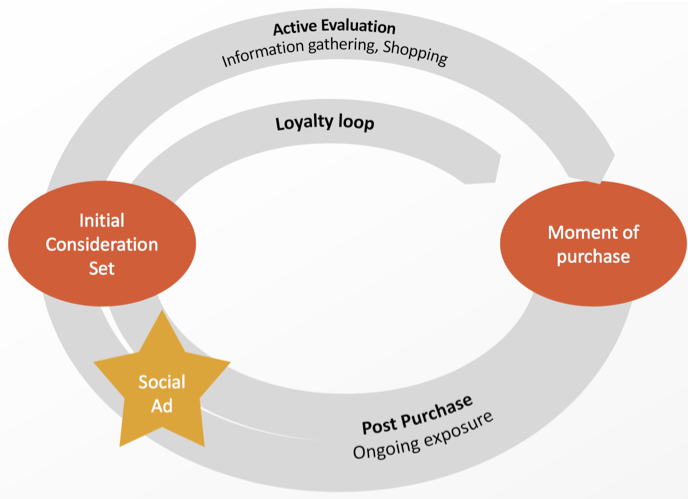Over the past decade, social media has become quite the marketing force, with businesses of all shapes and sizes expanding their ad game on multiple social platforms. But are all ads created equal? The answer is unequivocally “no.”
Physical therapy ads are targeting a unique audience – those in pain usually with movement disorders.
The Challenge with Social Media Advertising
The big challenge is that most patients don’t search for the help of a healthcare provider on social media. This is where ads come in. You put your message in front of a local audience that uses Facebook, Instagram, or Twitter. You’re guaranteed to get your name in front of members of the community.
The only problems are that most of them:
- don’t have a problem they think you can help them with,
- don’t know if seeing a physical therapist is the right choice,
- have to go through several steps before they become a paying patient.
You only have a second or two to engage the social media user, so your ads have got to stand out. While there are challenges as noted above, your ads will not result in any meaningful return on investment if they aren’t compelling, well-written, and have visual creative (pictures or video) that gets Facebook/Instagram/Twitter users to stop scrolling and click on your ad.
But how? Today, I’m going to provide 10 tips for writing a powerful social media ad.

#1 Don’t Forget About Your Brand Voice
You want your current and potential customers to recognize your brand voice everywhere, so consistency is key. If your business’s brand voice is light and carefree everywhere else, then you want to make sure your social media ad copy reflects that too. Be careful with this brand voice. Healthcare providers are professionals. If you are going to keep it fun, always remember to be professional.
#2 Keep It Simple
Remember: you’ve only got a second or two before the user will scroll on and forget your ad even existed. That’s why it’s important to keep your social media ad copy simple. If it’s possible, for example, to take your ad from 5 sentences to 1 and maintain the same message, then do it. “Longer,” in the case of social media copy, is probably not better, but you have to test. Only through testing short and long ad copy will you know what works best.
#3 Engage Your Audience

The real purpose of social media is socializing, so your ad copy needs to reflect that. Instead of promoting, promoting, promoting, you’ll want to engage your audience in conversation. Ask them questions, ask for their opinions, or start a discussion about a relevant topic and ask them to weigh in.
Yes, you can still advertise, but don’t forget to converse with your local market and prospective patients. No matter how you choose to do it, socializing is much more effective in helping you make human connections than just posting ads dry ads.
#4 Target the Senses
Enhance your social media ad copy with visuals like intriguing images or videos. Much of your audience will be attracted to what they see and not necessarily what they read, so make sure those images or videos are good!
Think about your scrolling habits. When you’re perusing Instagram, for instance, does the written copy or the visual image/video catch your eye first? Chances are, you chose the visuals, and chances are, so will your audience.
#5 Proofread and Edit
Nothing is more of a turn-off than an ad that contains typos. Even the best writers overlook an error or two, so don’t feel bad about running your ad copy past another set of eyes. Trust me: you don’t want your audience to catch them before your team does. After all, your credibility and professionalism are on the line every time you click the “publish” button.
And there are extra benefits to passing your work off to another set of eyes. For one, your colleague could notice inconsistencies with brand voice. And second, you could get a different perspective on the tone of your ad. Sometimes when we’re “too close to the project,” we can’t see where changes need to be made.
#6 Target the FOMO – Fear of Missing Out on Natural Care & Pain Relief
There needs to be a sense of urgency in your ad copy. If not, then what would stop a potential customer from scrolling past while vowing to themselves to come back later? Adding an element of FOMO, or the Fear of Missing Out, is a critical part of getting potential customers to click and buy in the moment.
So, how do you create this urgency? Offer educational information. If you are advertising and event, then use urgency and scarcity – deadlines and limited seating.
#7 Align Your Advertising

Instead of thinking of your social media ad as a stand-alone piece, you’ll want to take a step back and ask yourself how it fits into your strategy as a whole. Make sure that this ad — along with all of your others — is just a piece of a broader message about who you are, conditions you treat, how to prevent problems, and what patients can expect from your company.
#8 Your CTA
Once you’ve determined the goal of your social media ad (whether it’s for your potential customer to learn more, make a purchase, or refer a friend), write a call-to-action that encourages customers to take steps toward that goal.
Keep them simple and short, and make sure they deliver on the promise. In other words, if your call-to-action says “learn more,” then be sure that when they click on it, they learn more — avoid making your customers jump through several hoops by clicking on CTAs that don’t deliver.
#9 Use Emojis

If appropriate for your business’s tone, style, and feel, try incorporating emojis into your ad copy. Of course, if your audience isn’t in tune with emojis, then you should probably avoid them. But if you do decide to use them, make sure you’re consistent with which ones you use and how you use them. You can be funny and quirky and engaging if you choose the right emojis…but remember, you are a physical therapy practice.
#10 Analyze Your Ad’s Performance – Even the Best Advertisers Miss the First Time
As always, in advertising your physical therapy services, there is usually quite a bit of trial and error. If you’re not willing to put in the time and some budget, don’t advertise. However, as long as you keep an open mind and a willingness to test, you should be able to tweak your ads to reach a wider or more relevant audience.
Once your ad goes live, take a look at how well it performs. Analyze the “why” behind its performance, and use this information to make changes to future ads. Then, analyze their performance to see if your tweak worked or if you need to make further changes.
It’s All About Ads That Perform

Of course, every business wants to produce ads that perform well. That’s why it’s important to assess your current ad copy’s strengths and weaknesses and to incorporate the above tips as you write more. Trying the new and tweaking the old is essential to good copywriting, and you’re sure to see results if you keep pressing forward.
















